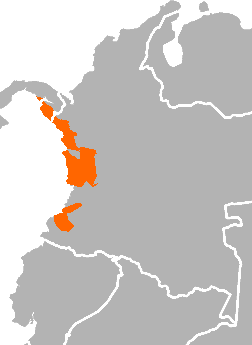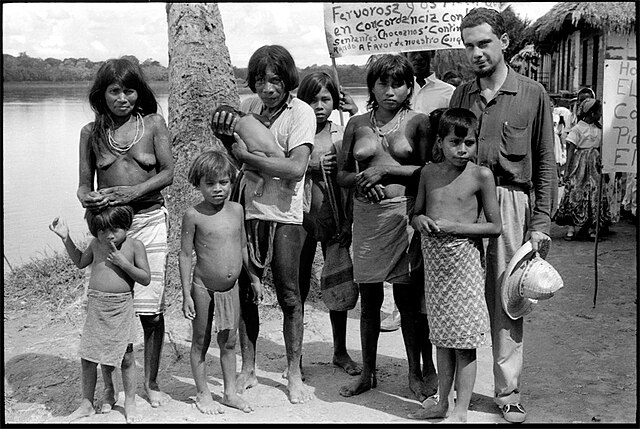Loading AI tools
Language family of Colombia and Panama From Wikipedia, the free encyclopedia
The Choco languages (also Chocoan, Chocó, Chokó) are a small family of Native American languages spread across Colombia and Panama.
| Chocoan | |
|---|---|
| Geographic distribution | Colombia and Panama |
| Linguistic classification | One of the world's primary language families |
| Subdivisions |
|
| Language codes | |
| Glottolog | choc1280 |
 | |

Choco consists of six known branches, all but two of which are extinct.
Anserma, Arma, and Sinúfana are extinct.[citation needed]
The Emberá group consists of two languages mainly in Colombia with over 60,000 speakers that lie within a fairly mutually intelligible dialect continuum. Ethnologue divides this into six languages. Kaufman (1994) considers the term Cholo to be vague and condescending. Noanamá has some 6,000 speakers on the Panama-Colombia border.
Internal classification by Jolkesky (2016):[1]
(† = extinct)
Jolkesky (2016) notes that there are lexical similarities with the Guahibo, Kamsa, Paez, Tukano, Witoto-Okaina, Yaruro, Chibchan, and Bora-Muinane language families due to contact.[1]
Genetic links between Choco and Chibchan had been proposed by Lehmann (1920).[2] However, similarities are few, some of which may be related to the adoption of maize cultivation from neighbors.[1]: 324
Choco has been included in a number of hypothetical phylum relationships:
Loukotka (1968) lists the following basic vocabulary items for the Chocó languages.[4]
| gloss | Sambú | Chocó Pr. | Citara | Baudo | Waunana | Tadó | Saixa | Chamí | Ándagueda | Catio | Tukurá | N'Gvera |
|---|---|---|---|---|---|---|---|---|---|---|---|---|
| one | haba | abá | aba | aba | haba | aba | abbá | abba | abá | |||
| two | ome | ume | dáonomi | umé | homé | umé | ómay | tea | unmé | |||
| three | ompea | umpia | dáonatup | kimaris | hompé | umpea | ompayá | umbea | unpia | |||
| head | poro | poro | achiporo | púro | boró | tachi-púro | boró | bóro | buru | porú | ||
| eye | tau | tau | tabú | tau | dága | tau | tau | dáu | tow | dabu | tabú | tapü |
| tooth | kida | kida | kida | kidá | xidá | kidá | chida | chida | ||||
| man | amoxina | mukira | umakira | emokoida | mukira | mukína | mugira | mohuná | mukira | |||
| water | pañia | paniá | pania | pania | dó | pania | panía | banía | puneá | panea | pánia | |
| fire | tibua | tibuá | xemkavai | tupuk | tupu | tubechuá | tübü | |||||
| sun | pisia | pisiá | umantago | vesea | edau | vesea | áxonihino | umata | emwaiton | humandayo | ahumautu | |
| moon | edexo | édexo | hidexo | xedeko | xedego | edekoː | átoní | edexo | heydaho | xedeko | xedéko | hedeko |
| maize | pe | pe | paga | pedeu | pe | pe | bé | pe | ||||
| jaguar | imama | ibamá | ibamá | imama | kumá | pimamá | imama | imamá | imamá | |||
| arrow | enatruma | halomá | halomá | sia | chókiera | umatruma | sía | ukida | enentiera |
For reconstructions of Proto-Chocó and Proto-Emberá by Constenla and Margery (1991),[5] see the corresponding Spanish article.
Seamless Wikipedia browsing. On steroids.
Every time you click a link to Wikipedia, Wiktionary or Wikiquote in your browser's search results, it will show the modern Wikiwand interface.
Wikiwand extension is a five stars, simple, with minimum permission required to keep your browsing private, safe and transparent.